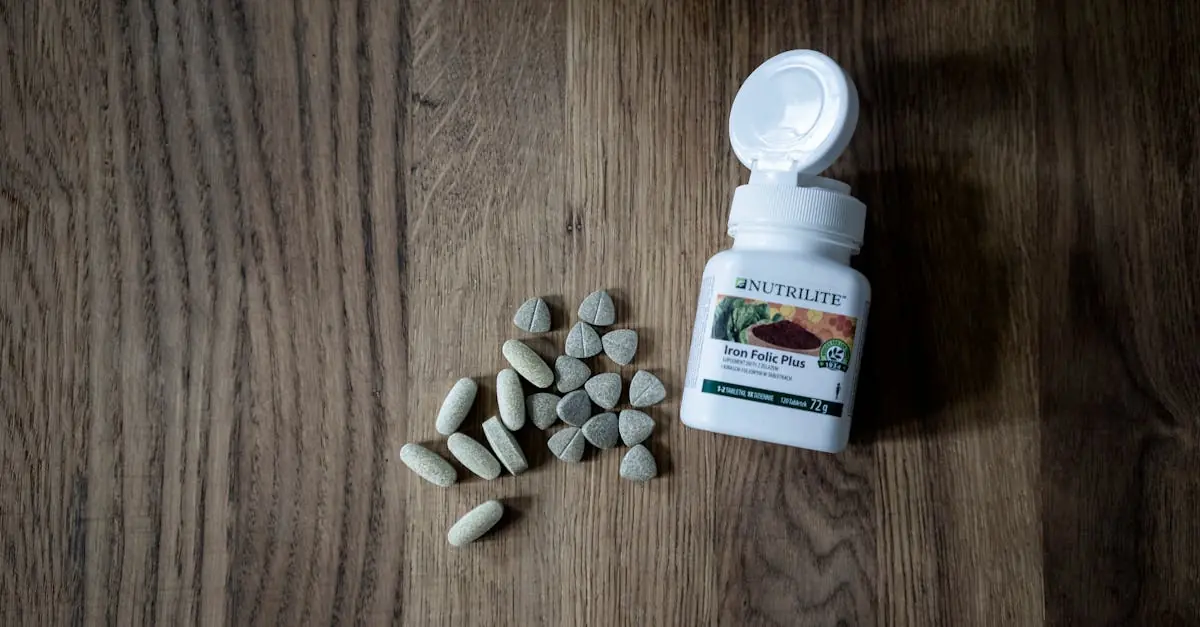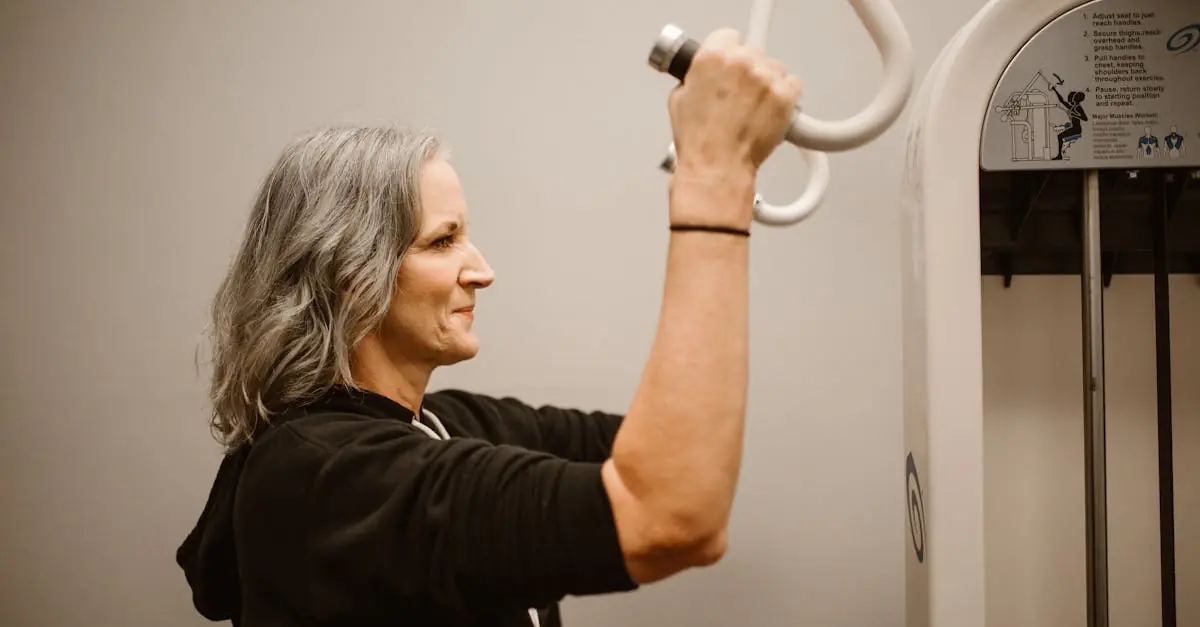Table of Contents
ToggleTummy time isn’t just a workout for babies; it’s a golden opportunity for bonding that both parents and little ones can enjoy. Picture this: a tiny human, face down on a colorful mat, wiggling like a fish out of water while their parent cheers them on. It’s a scene that’s equal parts adorable and hilarious, setting the stage for not just physical development but emotional connection too.
As babies learn to lift their heads and eventually roll over, they’re also soaking up love and attention from their caregivers. This playful interaction fosters trust and strengthens that all-important bond. So, let’s dive into the world of tummy time, where giggles meet growth, and every little push-up becomes a step toward a lifelong connection.
Importance of Tummy Time
Tummy time plays a crucial role in a baby’s growth and bonding with parents. Engaging in this activity encourages physical development and enhances emotional connections.
Developmental Benefits
Tummy time fosters essential developmental milestones in infants. Physical strength improves as they lift their heads and push their bodies. Social skills also benefit; babies gaze at caregivers, smiling and interacting during tummy time. This interaction promotes brain development as babies explore their surroundings. Motivated babies eagerly reach for toys placed within view, enhancing coordination. Regular tummy time sessions contribute to better posture, which lays the foundation for future physical activities.
Effects on Motor Skills
Motor skills develop significantly through tummy time. Babies strengthen their neck, shoulder, and back muscles, essential for later stages of mobility. Rolling over often becomes a new milestone reached during these sessions. Grasping toys and moving them improves hand-eye coordination. When babies practice reaching and crawling, they cultivate fine motor skills necessary for daily activities. Engaging in tummy time consistently encourages independence as babies grow stronger and more confident.
Tummy Time and Bonding
Tummy time offers a unique opportunity for bonding between parents and babies. Engaging in this activity allows caregivers to connect deeply with their infants through direct interaction.
Creating Connection with Your Baby
Creating connection with your baby occurs naturally during tummy time. Caregivers can use facial expressions, laughter, and encouraging words to spark joy and engagement. Close proximity during these moments supports emotional development and establishes trust. Babies respond positively to the attention they receive, promoting strong attachment. Regular tummy time fosters a bond that enhances understanding between both parties. Shared experiences during this time contribute significantly to the parent-child relationship. Observing each other’s cues deepens this connection, making it memorable and emotionally fulfilling.
Role of Physical Interaction
Role of physical interaction plays a vital part in the tummy time experience. Touch and movement stimulate sensory development in babies, reinforcing their sense of security. Caregivers can gently support their babies, encouraging them to lift their heads and explore their environment. This physical interaction not only promotes motor skills but also nurtures bonding through shared effort. Engaging on the floor together creates a safe and interactive space for exploration. The warmth of a caregiver’s presence during these moments makes activity enjoyable and enriching. Each interaction lays the groundwork for both physical and emotional growth.
Tips for Effective Tummy Time
Creating a positive tummy time experience involves careful preparation and engaging activities. Parents can maximize bonding opportunities during this important developmental phase.
Setting Up a Safe Space
Establishing a safe environment for tummy time is crucial. Use a clean, flat surface such as a play mat or a soft rug. Ensure the area has no sharp objects or small items that could pose a choking hazard. Check that the room has adequate lighting for visibility. Position toys within reach to encourage interaction. Rotate the location regularly to introduce different stimuli for the baby. A familiar environment fosters confidence, easing any initial resistance to being on their tummy.
Engaging Activities to Enhance Bonding
Incorporating fun activities during tummy time enhances the bonding experience. Use colorful toys to capture the baby’s attention and encourage reaching and grabbing. Encourage interaction by making eye contact and smiling. Adding simple games like peek-a-boo can generate laughter and delight. Sing songs or play soft music to create a pleasant atmosphere. Vary the duration and frequency of tummy time sessions. Observing the baby’s responses helps tailor activities to individual preferences, reinforcing connection and engagement.
Common Challenges and Solutions
Tummy time presents various challenges. Addressing these issues promotes a positive experience for both babies and caregivers.
Addressing Discomfort or Resistance
Discomfort often arises during tummy time. Providing a comfortable surface can help alleviate resistance. Using a soft blanket or mat creates a gentle environment. Ensuring the baby’s head is well-supported enhances comfort. Introducing tummy time when babies are well-rested and fed encourages a more positive attitude. Caregivers can also engage by placing their faces at the baby’s level, fostering connection. If a baby continues to resist, shortening sessions and gradually increasing duration might be beneficial. Offering toys to inspire play can transform the experience into an enjoyable one.
Incorporating Tummy Time into Daily Routine
Incorporating tummy time into daily activities enriches bonding. Scheduling sessions after diaper changes or naps blends seamlessly into the routine. Caregivers can set aside dedicated times, making it a predictable part of the day. Additionally, making tummy time enjoyable with engaging toys boosts interest. Alternating locations keeps the experience fresh and stimulating. Parents and caregivers must prioritize communication, using vocal encouragement to enhance interaction. Observing and adapting to the baby’s mood ensures each session remains enjoyable. Customizing the timing to fit the baby’s energy levels also contributes to a more rewarding experience.
Conclusion
Tummy time is more than just a physical activity; it’s a vital bonding experience that nurtures the parent-child relationship. Through shared moments of joy and interaction, caregivers can foster trust and emotional security, laying the groundwork for healthy development.
The significance of this practice extends beyond strengthening muscles and improving motor skills. It creates a unique space for connection where laughter and encouragement flourish. As parents engage with their babies during tummy time, they contribute to a foundation of love and support that enhances emotional growth.
Embracing tummy time as a regular part of daily routines not only promotes physical milestones but also deepens the bond between parent and child, making it an essential aspect of nurturing early development.







